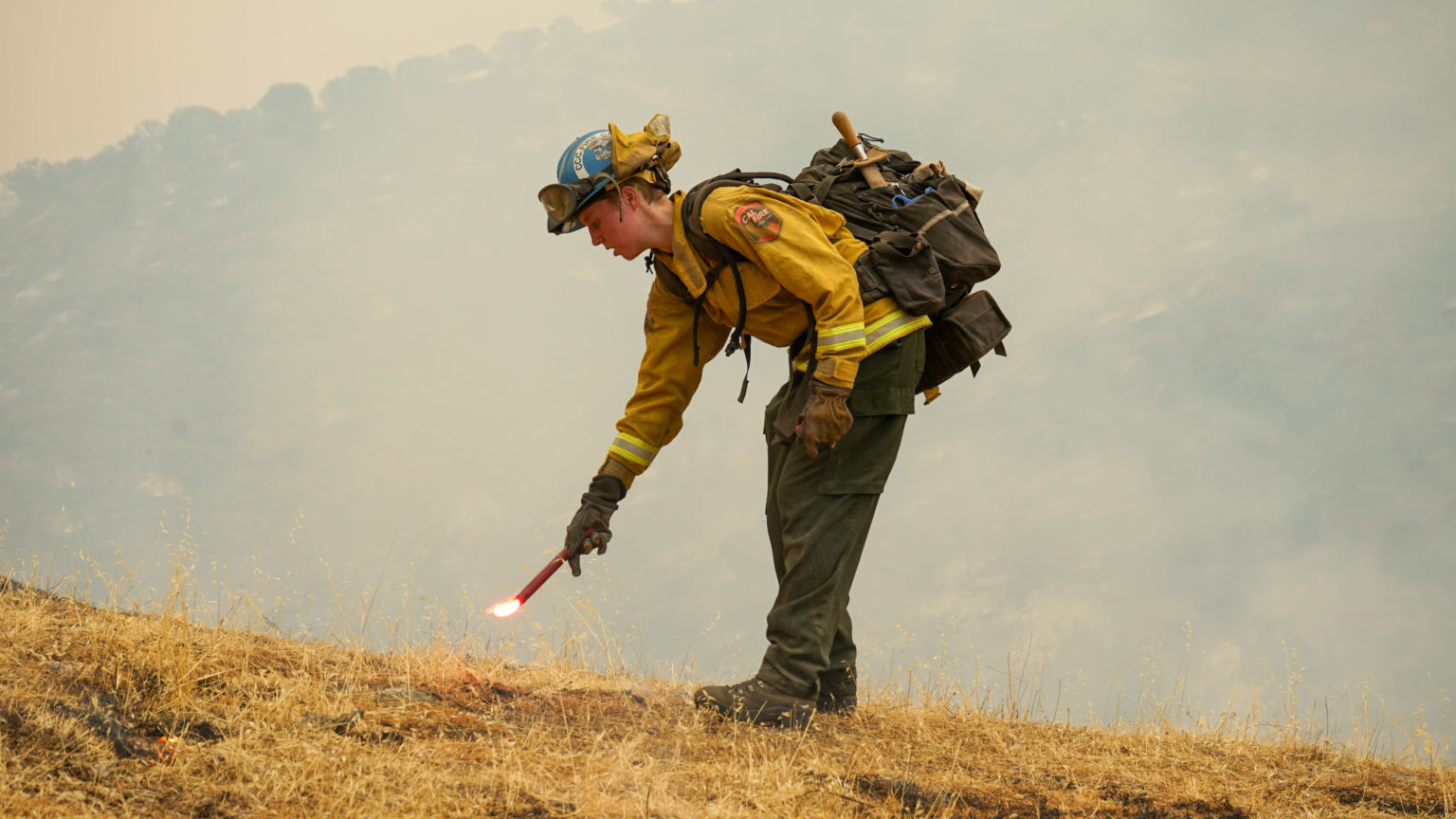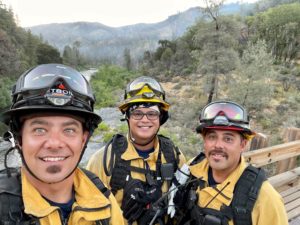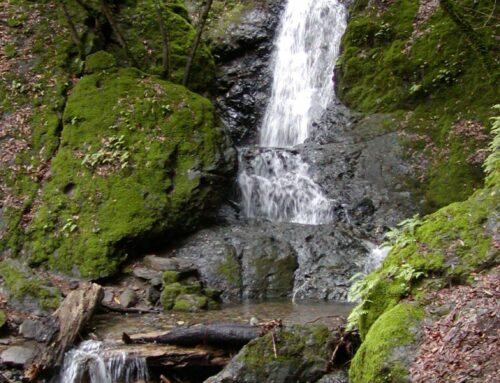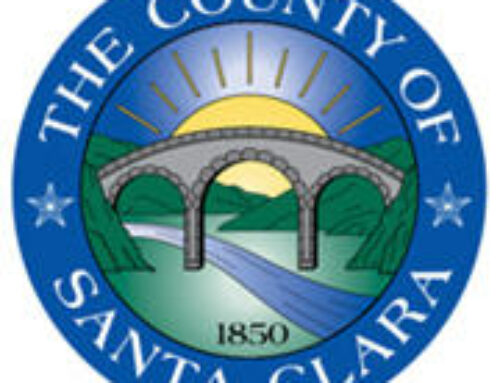We can’t rely on luck that we won’t see a major fire event this fall in the South Valley.
![]()

Morgan Hill Life file photo
California Conservation Corps Corpsmember Riley Gilmartin uses a fusee to help burn grass along a hand line to keep the fire from spreading to nearby ranch homes during the 2020 SCU Lightning Complex Fire.
This editorial is the opinion of Morgan Hill Life
September is National Preparedness Month, an annual reminder for individuals and families to be aware of the importance of preparing for potential natural disasters and emergency situations.
 The coming months might prove to be especially dangerous after a prolonged heat wave in early September — with a week’s worth of days more than 100 degrees — sucked the moisture from trees, shrubs and grasses. This left Californians with a parched, tinder-dry landscape ready to explode into an inferno from a spark or lightning strike. The term “flash drying” is used by fire experts to explain this weather phenomenon.
The coming months might prove to be especially dangerous after a prolonged heat wave in early September — with a week’s worth of days more than 100 degrees — sucked the moisture from trees, shrubs and grasses. This left Californians with a parched, tinder-dry landscape ready to explode into an inferno from a spark or lightning strike. The term “flash drying” is used by fire experts to explain this weather phenomenon.
During a short period of time during this intense heat, the landscape experiences significant dehydration of both the dead and alive vegetation fuels. Along with powerful winds, hot temperatures and low humidity levels, flash drying creates the perfect conditions for explosive wildfires that can grow out of control and threaten communities and neighborhoods. These fires are usually most active in the afternoon to early evening hours, a time of day in the Bay Area when temperatures peak and offshore winds get stronger. September and October are particularly at risk for these types of blazes.
We can’t rely on luck that we won’t see a major fire event this fall in the South Valley. Let’s recall that two years ago a series of lightning storms hit the Bay Area in mid-August, sparking dry grass and brush in dozens of locations. The flames burned out of control, spread by the force of strong winds and consuming more than 550,000 acres, including brush and grassland in Henry W. Coe State Park. The smoke hung heavy over much of Northern California including the communities of Morgan Hill and Gilroy, forcing people with respiratory problems to stay inside.

Photo courtesy Gilroy Fire Department
From left to right: fire engineer Stephen Hayes, firefighter Daren Mok, and Capt. Greg Lopez.
The Santa Clara Unit Lightning Complex fires were especially brutal with plenty of wildland vegetation dried into crisp stalks by triple digit temperatures. The fuel burned so quickly that the flames passed through grass as fast as 120 feet a minute, a speed responders find difficult to safely combat. The dry weather and topography of canyons along mountain ranges on both sides of South Valley also contributed to the difficulty in battling blazes. When brush ignites, it can throw embers as far as three-quarters of a mile away. If they land in fuel beds like dry grass, they add to the complexity of containment.
We encourage local residents — especially those with homes in the hills — to take some simple but important steps that might save lives if a major wildfire hits in the South Valley.
This advice was provided by the city of Gilroy’s website:
- Determine the safest escape routes from your home, workplace, and school including two ways out of each room.
- Identify safe spots in each room where you could take cover, if needed, like under sturdy tables and desks.
- Identify family meeting places and possible evacuation routes. Pick two locations — one in your neighborhood and another outside of your neighborhood. In the event your home is unsafe, your family can meet at the neighborhood location. In the event of an evacuation, meet at the location outside your neighborhood.
- Determine where you will stay if displaced whether it is with friends, family, a hotel, or a public shelter.
- Make an emergency contact list and include everyone’s phone numbers and additional contact information. Store all this information in your cell phone and make a few copies for your car, grab-and-go kit, and your house. Start a group text message group with all of these numbers so you can communicate quickly.
- Document emergency information you might need including medical information and insurance for all family members.
- Choose an out-of-state contact you can call after a disaster. Sometimes when phone lines are jammed it is easier to make an out-of-state call. All members of your household can check in with the out-of-state contact.
- In a major disaster plan to be self-sufficient for not less than 72 hours.
- Determine how you will stay informed.
- If you are unable to place a phone call, try texting. Texting is more likely to succeed and leaves more phone lines open for 9-1-1 calls.
- Keep your important documents in a safe place and take them with you if you are required to evacuate. Documents should be uploaded digitally to the cloud and hard copies should be stored in a fire-safe place like a safe or in a sealed plastic bag in the freezer.
 If you have children in your household, include them in the planning process. Have age-appropriate conversations about disasters that might affect your family. Make sure kids know the family meeting locations. Also make sure they know their home address and family phone numbers. Also, train them how and when to call 9-1-1 during an emergency or crisis.
If you have children in your household, include them in the planning process. Have age-appropriate conversations about disasters that might affect your family. Make sure kids know the family meeting locations. Also make sure they know their home address and family phone numbers. Also, train them how and when to call 9-1-1 during an emergency or crisis.
Preparing in advance for an emergency such as a wildfire will give you better odds in surviving through the ordeal. Take steps now to be ready if a natural disaster strikes.






